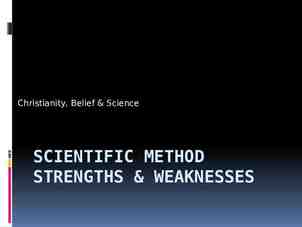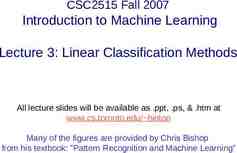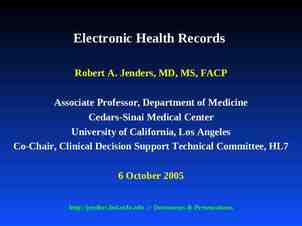Blue Ocean Strategy Chapter 7 “Overcome Key Organizational Hurdles”
43 Slides987.84 KB
Blue Ocean Strategy Chapter 7 “Overcome Key Organizational Hurdles”
EXECUTION for a profitable business model is key, although it can be very challenging.
Blue oceans represent a significant exit from the status quo .They hinge on a shift from convergence to divergence in value curves at lower costs. This raises the execution bar.
4 Hurdles 1. Cognitive. 3. Motivation 2. Limited Resources. 4. Politics.
5 Principle of Blue Ocean Strategy th * Overcome key organizational hurdles to make blue ocean strategy happen in action.
Tipping Point Leadership This allows you to overcome the four hurdles fast and at a low cost, while winning employees’ backing in executing a break from the status quo. (pg. 148)
New York City Police Department (NYPD) In the early 1990s, New York City was heading toward anarchy. (Crimes and Murders were at an all time high) Bill Bratton was police commissioner of NYC during the time, with a very small budget to utilize.
Bill Bratton’s Blue Ocean Strategy In less than 2 years and without an increase in his budget, Bratton turned NYC into the safest large city in the U.S. Used a blue ocean policing strategy that revolutionized U.S. policing as it was then known. “Profits” jumped and “Customers” won. Crime rates have continued to fall due to this. Defying conventional wisdom, Bratton achieved these results in “record time” with few resources, lifting employee morale, creating a win- win for all involved.
The Four Organizational Hurdles to Strategy Execution Cognitive Hurdle- An organization wedded to the status quo Resource Hurdle- Limited resources Motivational Hurdle- Unmotivated staff Political Hurdle- Opposition from powerful vested interests
The Pivot Lever: Disproportionate Influence Factors “ Key to unlocking an epidemic movement is concentration, not diffusion.” (pgs. 150-151)
The Pivot Lever: Disproportionate Influence Factors Tipping point leadership builds on the rarely exploited corporate reality that in every organization, there are PEOPLE, ACTS, and ACTIVITIES that exercise a DISPROPORTIONATE INFLUENCE on performance. (pg. 151)
The Pivot Lever: Disproportionate Influence Factors KEY QUESTIONS ANSWERED BY TIPPING POINT LEADERS: - What factors or acts exercise a disproportionately positive influence on breaking the status quo? - On getting the maximum bang out of each buck of resources? - On motivating key players to aggressively move forward with change? - On knocking down political roadblocks that often trip up even the best strategies?
Break Through the Cognitive Hurdle “There are only two performance alternatives: to make the performance targets or to beat them.” Figures can be manipulated – Even when the numbers are not manipulated, they can be misleading Stretch goals encourage abuse – Which leads to hostility and suspicion among the parts of the organization
Tipping Point Leadership Does not rely on numbers to break through the organization’s cognitive hurdle – “Seeing is Believing” Builds on insight to inspire a fast change in mindset that is internally driven of people’s own accord
Ride the Electric Sewer Employees must come face-to-face with the worst problems – Showing the worst reality to your superiors can shift their mind-set
New York Subway Was feared by New Yorkers Citizens boycotted the system Only 3% of the city’s major crimes happened on the subway
Massachusetts Bay Transportation Authority Squad Car Problem – MBTA – Bratton’s Strategy
Meet with Disgruntled Customers Don’t rely on market surveys Do you ever wonder why sales don’t match your confidence in your product? – There is no substitute for meeting and listening to dissatisfied customers
Boston’s Police District 4 High crime rates People were moving out of the neighborhood Bratton’s strategy
Jump the Resource Hurdle How do you get an organization to execute strategic shifts with fewer resources? – Hot Spots: activities that have low resource input but high potential performance gains – Cold Spots: activities that have high resource input but low performance impact – Horse trading: involves trading your unit’s excess resources in one area for another unit’s excess resources to fill remaining resource gaps
Jump the Resource Hurdle Cont. What actions consume your greatest resources but have scant performance impact? What activities have the greatest performance impact but are resource starved?
Redistribute Resources to Your Hot Spots Bratton achieved the sharpest drop in subway crime and disorder in Transit’s history by placing police officers at targeted Hot spots. – Resulted in decrease in crime, while the size of the police force remained constant Bratton identified the Hot spots in the narcotics department and reallocated staff and resources to those Hot spots – Resulted in decrease in drug related crime
Redirect Resources from Your Cold Spots Leaders should free up resources by searching out Cold spots New York subway example
Engage in Horse Trading
Overcome Key Organizational Hurdles Jump the Motivational Hurdle
Executing Blue Ocean Strategy Alert employees of the need for change Identify how strategy can be achieved People must not only recognize the need for strategic change but they must also act on insight in a meaningful way
Do Mass Reactions Require Mass Actions? Many business leaders think massive reaction to strategy change requires massive action. This is often cumbersome and expensive. Is there an easier way? Yes- Zoom in on Kingpins, Place Kingpins in a Fishbowl, and atomize to get the organization to change itself.
Zoom in on Kingpins Kingpin Key influencer in the organization As in bowling, when you hit the kingpins, the rest of the pins come tumbling down which is a good thing in this case. Basically, a change catalyst within the organization should start with kingpins and eventually trickle down.
Place Kingpins in a Fishbowl Kingpins’ actions and inactions are made transparent to others within the organization like a fish in a bowl of water. By doing this you greatly raise the stakes of inaction. Those who lag behind are exposed and a fair stage is set for rapid change agents to shine
Fair Process In order for the fishbowl to work effectively, the playing field must be level that is responsibilities and expectations are clearly stated for everyone to hear/see. This means engaging all the affected people in the process and explaining reasoning associated with promotions and demotions.
Atomize to get the Organization to Change Itself Atomization framing of the strategic challenge Unless people believe the challenge is attainable, the change is not likely to succeed.
Secure a Consigliere on Your Top Management Team (A highly respected insider)
** Tipping Point Leaders engage one role few other executives think to include: a CONSIGLIERE.
Example NYPD Bratton from the NYPD always ensured that he had a respected senior insider on his top team who knew the challenges he would face in implementing the new policing strategy. He appointed John Timoney as his “number two” (basically a cop’s cop). Timoney dramatically changed the guard by reporting the likely attitudes of the top staff to the NYPD’s new policing strategy, identifying those who would fight or “silently sabotage” the new initiative.
Leverage Your Angels and Silence Your Devils
To knock down the political hurdles, ask yourself 2 sets of questions: 1. Who are my devils? Who will fight for me? Who will lose the most by the future blue ocean strategy? 2. Who are my angels? Who will naturally align with me? Who will gain the most by the strategic shift?
Example NYPD One of Bratton’s most serious threats with his new policing strategy came from New York City’s courts. They believed that his new strategy of focusing on quality of life crimes would overwhelm the system with small crime cases. Bratton clearly illustrated to his supporters that the court system could handle the quality of life crimes and that focusing on the, would in the long term, actually reduce their caseload.
“ Key to winning over your detractors or devils is knowing all their likely angles of attack and building up counterarguments backed by irrefutable facts and reason.” (pg. 168)
Important Questions to Ask Yourself Do you have a consigliere in your top management team? Do you know who will fight you and who will align with the new strategy? Have you built coalitions with natural allies to encircle dissidents? Do you have your consigliere remove the biggest challenges?
Challenging Conventional Wisdom
Conventional Wisdom vs. Tipping Point Leadership
Important Strategies to Remember: Don’t follow conventional wisdom. In order to execute a strategic shift with limited resources, use tipping point leadership. By addressing the hurdles to strategy execution and focusing on factors of disproportionate influence, this leads to actualizing a strategic shift.
Important Strategies to Remember: Focus on acts of disproportionate influence. This is a critical leadership component for making blue ocean strategy happen. It aligns employees’ actions with the new strategy.
















































